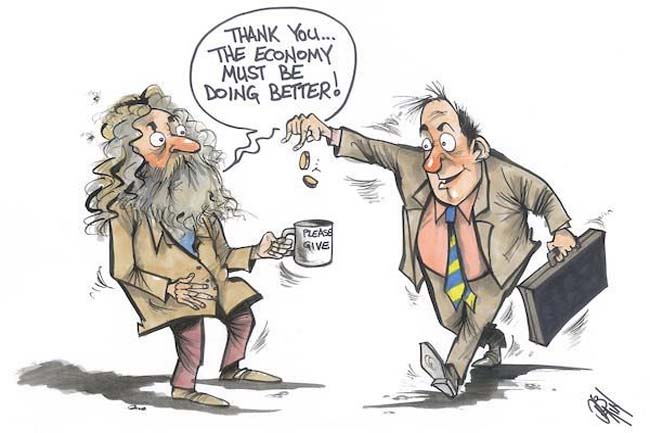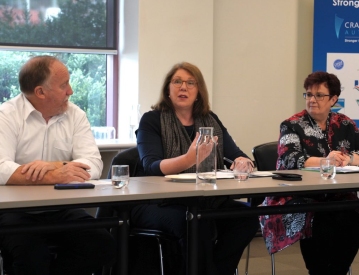The Government has a licence to invest in infrastructure for the benefit of all Australians, writes Dr Steven Hail.
ON 16 NOVEMBER, seven billion of federal funding was cut from 50 (mainly roadbuilding) projects across Australia.
In some cases, the projects had limited social benefits and considerable social costs; in others, they would have involved competing for materials, equipment, and skills currently in short supply, putting upward pressure on costs and the general price level. It might just be that they did not reflect the Government’s nation-building priorities. It certainly was not because the Government could not find the money.
To listen to much of the narrative, you would have been misled. Serious people in suits implied there was not enough money in the federal coffers to pay for the spending. The AFR View appeared to claim that the ability of the Government to invest depends on being able to borrow large sums at low interest rates, and that such borrowing drives interest rates up, because the government must compete for private-sector savings to pay for its plans.
This is incorrect: it is an example of a very persistent fallacy called “loanable funds theory” which was refuted by John Maynard Keynes nearly a century ago. It requires challenging, not with reference to current fiscal balance or debt to GDP ratio, but on the basis that it misrepresents how modern monetary systems work.
To start with, the Commonwealth government issues the Australian dollar. Whether for current or capital spending, every dollar it spends adds to private bank reserves at the Reserve Bank of Australia (what economists call “base money”) and to private-sector bank accounts (included in other measures of “the money supply”).
Federal taxes delete dollars from the system, helping to limit inflation risk. If the dollars spent exceed the dollars deleted, the government is in deficit and the private sector is in surplus. Under our current institutional arrangements, the government then auctions treasury bonds to match the deficit, but this is a choice and not a necessity, and there is an argument that it is also an anachronism.
That it once made sense was explained by the Australian Office of Financial Management in 2011 in 'A History of Treasury Bond Tenders and Performance'. In those days, the RBA kept control of the cash rate by keeping private banks short of cash, so they had to borrow from it every few days. This was how the RBA used to control interest rates.
Deficit spending feeds cash into the banking system, and would have undermined the ability of the RBA to control interest rates had it not been combined with treasury bond issuance to drain excess reserves from the system. Matching bond sales made sense, but they were not needed to pay for government spending, but to support the RBA’s cash rate.
Indeed, it would have made just as much sense for the RBA to issue bonds as for the Commonwealth government to do so. It was not and is not about “borrowing” in the conventional sense of the term.
We have a different situation now, because of the reserves created in 2020-21 by quantitative easing during the pandemic which still sit in the banking system. The RBA controls interest rates by varying the rate it pays on bank reserves, rather than by keeping banks short of electronic cash. Government bonds are attractive to fund managers and play a role on financial markets, but what used to be the main reason for their issuance no longer exists.
In any event, as with federal taxation, the dollars to pay for newly issued bonds must be spent into the system by the Government or the RBA, before taxes can be paid, or bonds purchased. You cannot pay federal taxes or buy treasury bonds with non-existent dollars, and those dollars must be in bank reserve accounts at the RBA.
As for the government itself, it has precisely the same ability to spend its currency starting with $0 in the official public account at the RBA as it would with $100 billion recorded in that spreadsheet cell (our monetary system is basically just a giant spreadsheet). The Commonwealth government is dependent on neither the bond market nor raising additional taxes to pay for its infrastructural investments. It is the currency issuer. Its limitations are a shortage of real productive resources and the risk of inflation.
In November 2023, this is better understood in the Biden Administration in Washington D.C. than in our own government in Canberra, partly because the policy narrative in Australia has been so narrow and not reflecting the realities of a modern monetary system.
Further implications of this include the genuine constraints facing governments like our own; how best to manage the risk of inflation; and how getting this wrong has led to major mistakes, including periods of unnecessarily high underemployment, delayed action on climate change, and private-sector financial fragility.
You can follow Dr Steven Hail on Twitter @StevenHailAus, as well as on Facebook at Green Modern Monetary Theory and Practice.
Related Articles
- Modern monetary theory opens range of economic possibilities
- If you want to promote democracy, think modern money
- Is a different type of economics the answer?
- A response to MMT criticism
- The MMT government job guarantee
 This work is licensed under a Creative Commons Attribution-NonCommercial-NoDerivs 3.0 Australia License
This work is licensed under a Creative Commons Attribution-NonCommercial-NoDerivs 3.0 Australia License
Support independent journalism Subscribe to IA.














